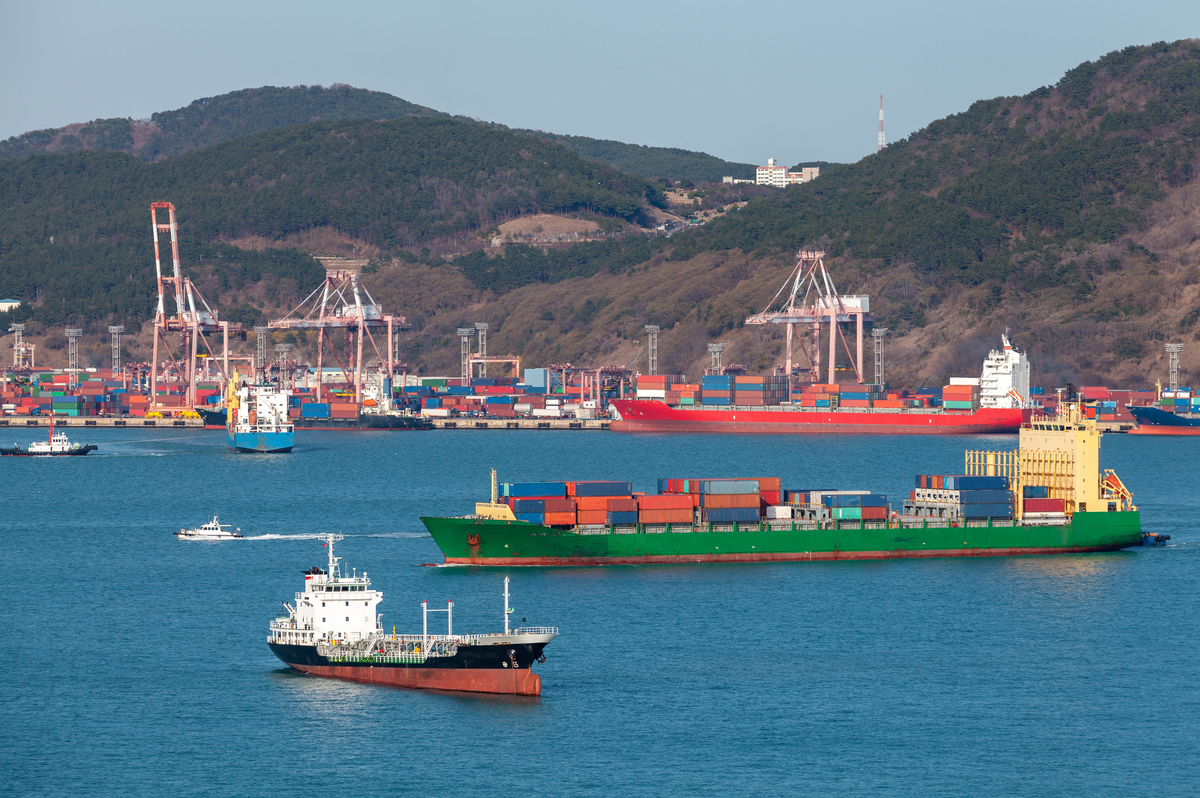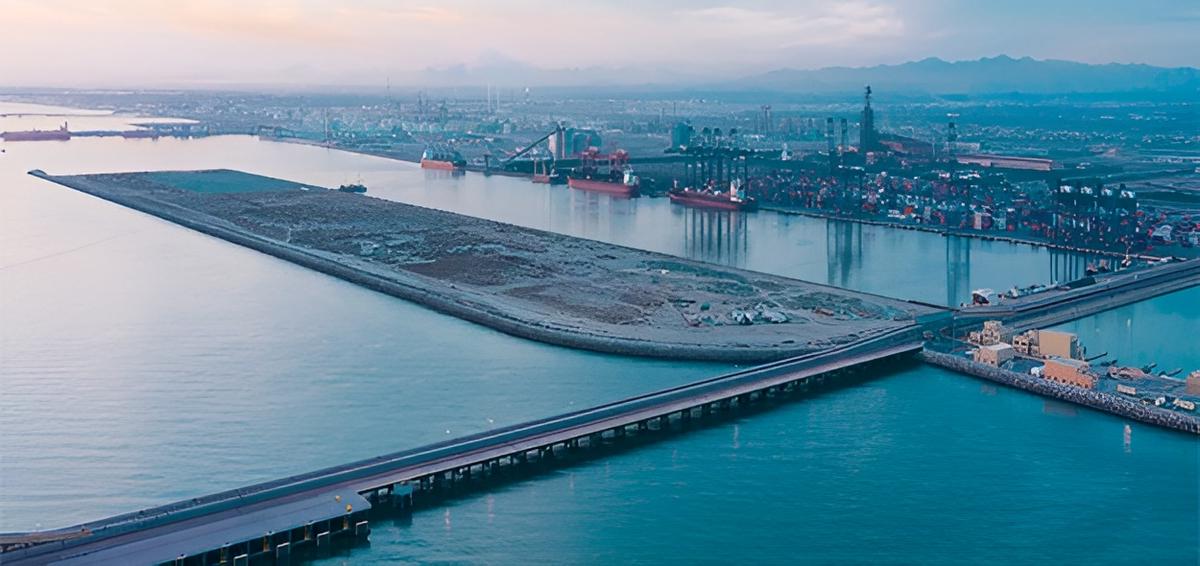East of Suez Fuel Availability Outlook 11 Nov 2025
VLSFO and LSMGO availability good in Port Klang
Bunkering remains suspended in some Zhoushan anchorages
Bunker demand low in Fujairah
 IMAGE: Industrial cargo ships in Busan port area, South Korea. Getty Images
IMAGE: Industrial cargo ships in Busan port area, South Korea. Getty Images
Singapore and Malaysia
Despite subdued bunker demand in Singapore, VLSFO delivery times now show a wide disparity among suppliers — some can supply within three days, while others need up to 12 days. Last week, most suppliers quoted lead times of 5–10 days.
HSFO supply has tightened slightly, with lead times stretching from 5–10 days last week to 7–12 days now. In contrast, LSMGO availability has improved, with current lead times of 3–10 days, down from 5–17 days previously.
Residual fuel oil inventories at the port have averaged 1% higher in the first week of November compared to October levels, remaining above 24 million bbls. This comes despite a 1% fall in net fuel oil imports, which have dropped by 1.22 million bbls, while exports have also decreased by 1.19 million bbls, according to Enterprise Singapore.
Meanwhile, middle distillate stocks have averaged 3% lower over the same period.
At Malaysia’s Port Klang, VLSFO and LSMGO remain readily available, with prompt deliveries possible for smaller parcels, though HSFO supply continues to be tight.
East Asia
Bunker demand in Zhoushan remains muted, with most suppliers now advising lead times of 4–6 days for VLSFO, slightly shorter than last week’s 5–8 days. HSFO lead times have also narrowed to 4–6 days, while LSMGO remains steady within the same range.
However, bunker deliveries at Zhoushan’s Xiushandong anchorage were suspended on Monday due to severe weather linked to Tropical Storm Fung-wong, according to a source. Operations at the outer Tiaozhoumen and Xiazhimen anchorages have been halted since the weekend, though bunkering at the inner Mazhi anchorage continues uninterrupted.
Most suppliers remain unsure regarding when full operations will resume, as the storm tracks north-northeast toward Taiwan.
Fuel availability varies widely across northern China. Dalian and Qingdao have adequate VLSFO and LSMGO stocks, though HSFO remains tight in Qingdao. Tianjin, meanwhile, continues to experience shortages across all grades. In Shanghai, supplies of VLSFO and HSFO are limited, while LSMGO remains relatively stable.
Further south, Fuzhou is facing shortages in both VLSFO and LSMGO, while Xiamen has sufficient VLSFO but restricted LSMGO availability. Delivery options for both fuels remain limited in Yangpu and Guangzhou.
In Hong Kong, lead times across all grades are around seven days, consistent with recent weeks.
Meanwhile, Taiwan’s Central Weather Administration (CWA) has issued a land warning for Tropical Storm Fung-wong, whose center was located 370 km southwest of Eluanbi. The warning applies to Kaohsiung, Tainan, Taitung County, and Pingtung County, while a sea warning remains in effect for the Bashi Channel, Dongsha Island, southeast Taiwan waters, and the Taiwan Strait.
As a result, bunkering at Kaohsiung has been suspended today, and Taichung deliveries were temporarily halted this morning. Operations at Keelung and Hualien are still running smoothly, though traders caution that disruptions could follow.
At present, VLSFO and LSMGO can typically be delivered within three days at Keelung, Taichung, Hualien, and Kaohsiung, with little change from last week.
Bunker demand in South Korea remains low, with lead times across all fuel grades holding at around 2–9 days, nearly unchanged from 3–8 days last week. However, adverse weather is expected to disrupt operations — between 17–18 November in Busan and Ulsan, and from 16–18 and 20 November in Yeosu and Daesan, a trader said.
In Japan, prompt VLSFO supply remains tight across key ports including Tokyo, Chiba, Yokohama, Kawasaki, Osaka, Kobe, Sakai, Mizushima, Nagoya, and Yokkaichi. LSMGO stocks are generally adequate nationwide, though immediate deliveries are proving difficult in Mizushima.
B24-VLSFO is available only on request in Tokyo, Chiba, Kawasaki, and Yokohama. Meanwhile, HSFO availability has tightened across most Japanese ports, and Oita has shortages of all fuel grades, including VLSFO, LSMGO, and HSFO.
Oceania
In Western Australia, VLSFO and LSMGO remain readily available at Kwinana and Fremantle, with most suppliers quoting lead times of around seven days. Deliveries are primarily handled by barge from a single supplier, while LSMGO can also be delivered by truck. However, strong afternoon winds occasionally cause bunkering delays, a source noted.
In New South Wales, VLSFO is available at Port Kembla through both truck and pipeline, with a minimum pipeline delivery of 70 mt and smaller volumes supplied by truck.
In Sydney, a single barge operates alongside truck and pipeline options at selected berths, though its schedule can be affected by naval and cruise liner movements. VLSFO and LSMGO stocks remain ample, while HSFO supply is limited. Suppliers typically recommend lead times of about seven days.
The expected increase in cruise activity between December and February in Sydney, Cairns, and Darwin could further affect vessel schedules.
In Queensland, VLSFO and LSMGO are easily accessible at Brisbane and Gladstone, both with lead times of around seven days. HSFO in Brisbane is available only on request, while Gladstone may experience occasional weather-related delays. Access to Brisbane’s AAT terminal remains challenging. The port now operates two barges under separate suppliers, both supplying VLSFO and LSMGO, with HSFO available upon enquiry.
In Victoria, the ports of Melbourne and Geelong continue to maintain strong VLSFO and LSMGO inventories, though HSFO remains tight, especially for prompt deliveries. Melbourne, however, currently holds adequate HSFO reserves. Both ports are served by a single barge, and adverse weather in the Bass Strait can cause occasional delays. A seven-day lead time is generally advised. LSMGO can also be trucked to smaller ports such as Portland and Port Welshpool, with deliveries taking 2–3 days.
Overall, bunker supply across Australian ports remains stable, typically requiring around seven days’ notice. Thanks to ample inventories, deliveries within 3–4 days are often possible. Ports equipped with pipeline infrastructure, including Darwin and Dampier, still partly depend on truck deliveries.
In New Zealand, bunker availability remains steady, with VLSFO widely supplied at Tauranga and Auckland. Tauranga offers pipeline access at select berths, while Marsden Point can deliver both VLSFO and LSMGO via pipeline to cargo vessels.
Yesterday, strong winds in Wellington caused temporary bunkering delays. Looking ahead, the cyclone season in northern Australia — from 1 November to 30 April — is expected to periodically disrupt bunkering schedules, a source cautioned.
South Asia
In Sri Lanka, a supplier is advising prompt lead times of 1–2 days for all grades at both Colombo and Hambantota, slightly shorter than the three days quoted last week.
Middle East
Prompt bunker supply remains tight across all fuel grades in Fujairah, as several suppliers continue to grapple with low inventories and loading delays, despite muted demand. Lead times of 5–7 days are generally recommended, mirroring conditions at the nearby Khor Fakkan port. Some suppliers can still arrange urgent deliveries, though typically at a premium, a source said.
In Iraq’s Basrah, VLSFO and LSMGO remain readily available, while HSFO continues to be in short supply.
Saudi Arabia’s Jeddah has seen improved availability of both VLSFO and LSMGO, though port congestion continues to slow operations.
In stark contrast, Egypt’s Port Suez is facing severe shortages, with VLSFO, LSMGO, and HSFO stocks nearly depleted. Similarly, Qatar’s Ras Laffan is reporting tight VLSFO and LSMGO availability, while Djibouti is under acute supply pressure, with VLSFO and HSFO almost exhausted and LSMGO running critically low.
Meanwhile, Oman’s ports — Sohar, Salalah, Muscat, and Duqm — continue to maintain a steady LSMGO supply, with prompt dates available.
By Tuhin Roy
Please get in touch with comments or additional info to news@engine.online






